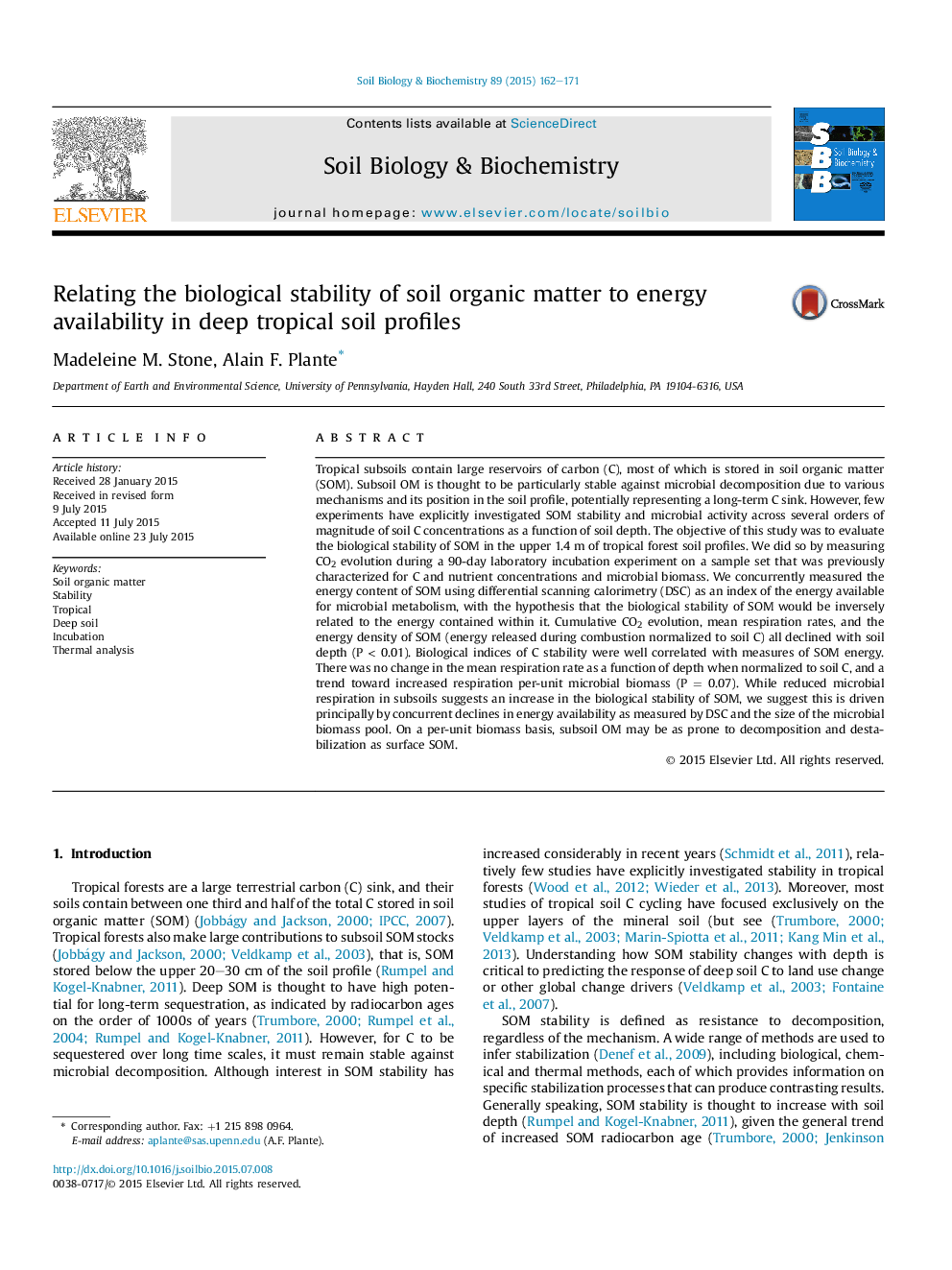| کد مقاله | کد نشریه | سال انتشار | مقاله انگلیسی | نسخه تمام متن |
|---|---|---|---|---|
| 2024463 | 1542595 | 2015 | 10 صفحه PDF | دانلود رایگان |
• Examined C stability in 1.4 m deep profiles of tropical soils from Puerto Rico.
• Measured biological stability by incubation and energy content by thermal analysis.
• Cumulative respiration and energy availability declined exponentially with depth.
• Respiration rates normalized to microbial biomass trended positively with depth.
• Low energy availability responsible for increased C stability with depth.
Tropical subsoils contain large reservoirs of carbon (C), most of which is stored in soil organic matter (SOM). Subsoil OM is thought to be particularly stable against microbial decomposition due to various mechanisms and its position in the soil profile, potentially representing a long-term C sink. However, few experiments have explicitly investigated SOM stability and microbial activity across several orders of magnitude of soil C concentrations as a function of soil depth. The objective of this study was to evaluate the biological stability of SOM in the upper 1.4 m of tropical forest soil profiles. We did so by measuring CO2 evolution during a 90-day laboratory incubation experiment on a sample set that was previously characterized for C and nutrient concentrations and microbial biomass. We concurrently measured the energy content of SOM using differential scanning calorimetry (DSC) as an index of the energy available for microbial metabolism, with the hypothesis that the biological stability of SOM would be inversely related to the energy contained within it. Cumulative CO2 evolution, mean respiration rates, and the energy density of SOM (energy released during combustion normalized to soil C) all declined with soil depth (P < 0.01). Biological indices of C stability were well correlated with measures of SOM energy. There was no change in the mean respiration rate as a function of depth when normalized to soil C, and a trend toward increased respiration per-unit microbial biomass (P = 0.07). While reduced microbial respiration in subsoils suggests an increase in the biological stability of SOM, we suggest this is driven principally by concurrent declines in energy availability as measured by DSC and the size of the microbial biomass pool. On a per-unit biomass basis, subsoil OM may be as prone to decomposition and destabilization as surface SOM.
Journal: Soil Biology and Biochemistry - Volume 89, October 2015, Pages 162–171
